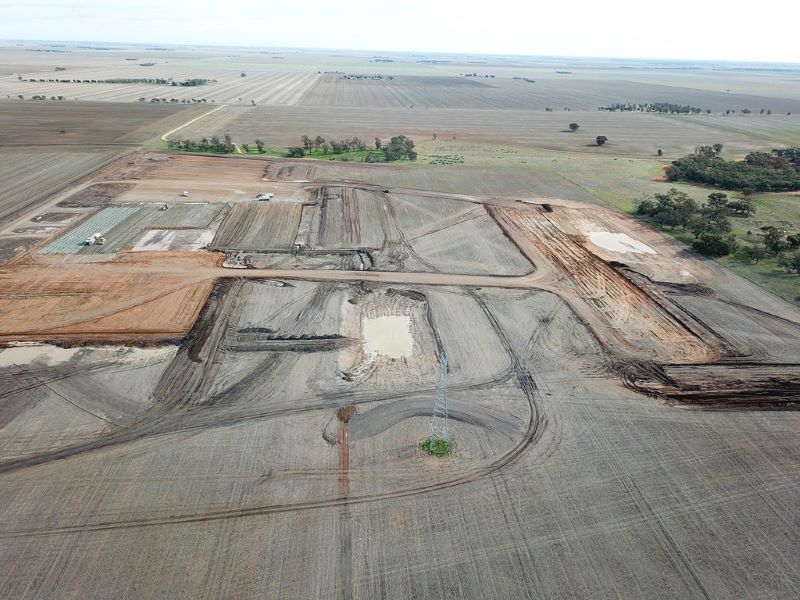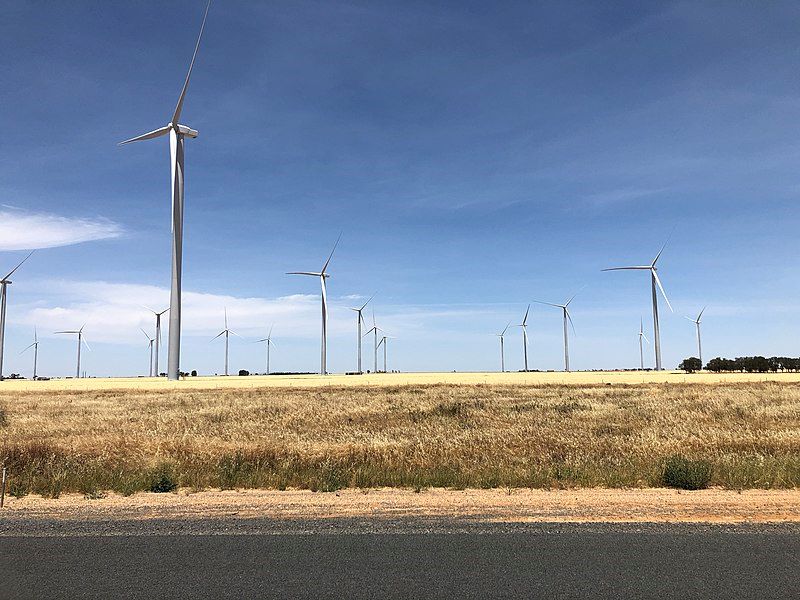Murra Warra is a 435MW onshore wind farm being developed in North Western Victoria, Australia.
A planning proposal for the wind power project was submitted to the Victorian Minister for Planning in July 2016 and it was approved in November 2016. The construction contracts for the project were signed in December 2017.
The wind farm is being developed in two stages at an estimated cost of $650m and is expected to operate for 25 years. The construction of the $247m stage one started in April 2018, while operations began in February 2020. The construction of stage two is expected to start in the third quarter of 2020 with completion scheduled for mid-2022.
A joint venture between RES Group and Macquarie Capital carried out the initial development of the project. The first stage of the wind farm project was sold to private equity company Partners Group in 2018, followed by the sale of stage two to the same company in August 2020. The construction phase of the Murra Warra II project will support over 400 jobs in Victoria.
Murra Warra wind farm location
The Murra Warra project is located 25km north of Horsham between the Henty Highway and the Blue Ribbon Road in the Wimmera region of Victoria.
The project site borders the Barret State Forest and includes 18 properties in the municipalities of Horsham and Yarriambiack. The location has good wind resources and is easily connected by road.
Murra Warra wind farm details
Murra Warra wind farm is being constructed on 10,502 acres of farmland used for sheep grazing and broadacre cropping. A total of 99 Senvion 3.7M144 turbines with hardstands will be installed at the site.
The first stage included the installation of 61 turbines, delivering 226MW of clean energy. The 209MW second stage will include 38 turbines that will generate power sufficient for more than 150,000 Victorian homes. Murra Warra II will eliminate 468,000t of carbon emissions a year. The power generated from stage two will be supplied to Australian electricity generation and retailing company Snowy Hydro under a power purchase agreement
The completed wind farm will feature an operations and maintenance building, four permanent meteorological masts and car parking facilities.
Murra Warra wind farm construction
35km-long underground cabling was done internally and 15km of the overhead line was built within the site. A 26m-high terminal station, linking with the 220kV transmission line, passing through the site was constructed as part of the stage one development. The transmission line connects the wind farm to the national grid.
The construction of the internal access roads and hardstands was completed by the end of 2018. Three of 61 turbines were installed at the site in December 2018 and the commissioning of the turbines took place in October 2018. All mechanical and electrical components of the wind turbines were installed in 2019.
Turbine details of Murra Warra wind farm
The 3.7M144 turbine is one of the quietest systems in its class and is designed to operate at low to high wind speeds. The turbine blades are aerodynamically optimised and have serrations on the edges. Each blade is 70.5m-long and weighs approximately 20t. The weight of the nacelle is approximately 131t.
The turbine features the next electrical system (NES) gearbox-based concept, including an asynchronous generator and a fully rated converter, which permits stable grid feed-in.
It has a large rotor with a 144m diameter, delivering a nominal output of 3.7MW. It is considered to be 6.7% more efficient compared to other models in its series. The hub height of each turbine is 139m and the total height to tip is 211m.
Power purchase agreement
A consortium of energy users led by Telstra signed a power purchase agreement in December 2017, covering the first stage of the project. The consortium members include Australia and New Zealand Banking Group (ANZ), Coca-Cola Amatil, Telstra and the University of Melbourne.
Monash University signed an off-take long-term agreement with the project developers to purchase the rights to electricity and large-scale renewable energy certificates (REC’s) produced by the wind farm. Through the agreement, Monash joins a consortium of electricity buyers led by Telsra.
The power generated at the wind farm will enable Monash to meet the institution’s goal of achieving net-zero emissions by 2030.
Financing for Murra Warra wind farm
A consortium of ANZ, The Bank of Tokyo-Mitsubishi UFJ, Sumitomo Mitsui Banking Corporation and Westpac Banking Corporation provided debt financing of $247m ($A320m) for the Murra Warra stage one development.
The sale of Murra Warra II marked the financial closure of the project.
Contractors involved
In partnership with Downer Group, Senvion was in charge of the engineering, procurement and construction works related to the Murra Warra wind project.
AusNet Services was contracted to develop the terminal station. The company also owns and operates the terminal station.
In September 2018, Civilex was awarded a major works construction tender to supply and install a total of 61 concrete turbine foundations for the Murra Warra wind farm.
SwitchCo Projects won a contract to provide project management services for the wind turbine engineering procurement and construction contract.
Siemens Gamesa Renewable Energy won a contract to provide full-scope operation and maintenance services for the wind farm in May 2020. Under the 30-year contract, the company will service Senvion turbines at the site.
GE Renewable Energy was awarded an EPC contract to supply 38 Cypress 5.5-158 wind turbines for the Murra Warra II wind farm. The company will deliver the first Cypress wind turbine to the project site in mid-2021. Wind farm construction specialist Zenviron received a contract to perform civil works and electrical reticulation.
Benefits of Murra Warra wind farm
The Murra Warra wind farm is expected to power 250,000 Victorian homes a year while reducing 1.3 million tonnes (Mt) of greenhouse gas emissions. It will have a low environmental impact and a footprint of less than 2% of the site area.
The project is expected to have minimal impact on the region’s agricultural productivity and is expected to generate economic benefits of $68m.





